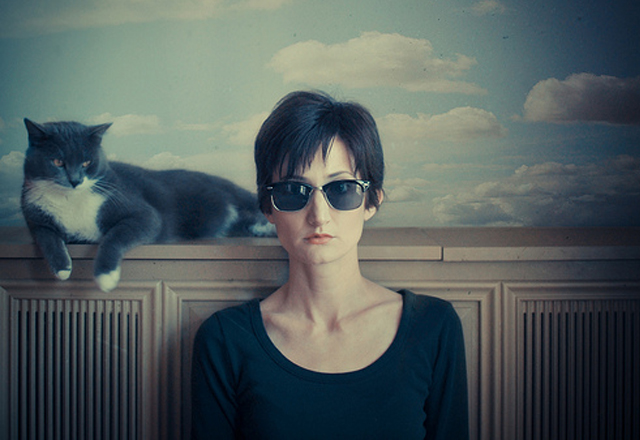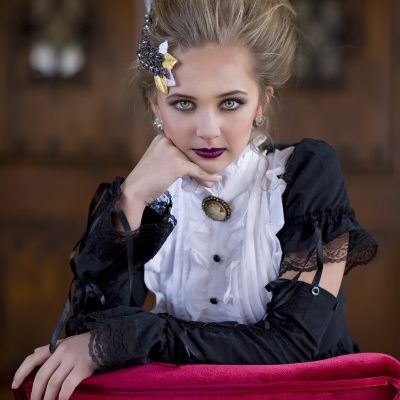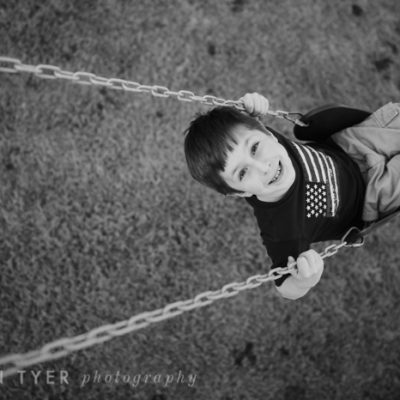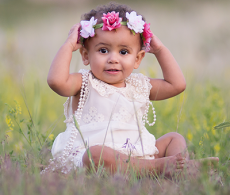by Guest Contributor Anna Gay

Self-portraiture has been a form of self-expression for thousands of years. All of the great masters of painting and classical art dabbled in self-portraiture not only to express their feelings, but also to practice their craft. With this in mind, let’s think about how we as photographers can use self-portraiture to hone our skills: become more familiar with our camera’s functions and settings, get new ideas for posing, props and locations, experiment with lighting, try new techniques in our post-processing, and the list could go on and on! If you are new to self-portraiture, here are a few tips to help get you started:
1. If you have a camera, or even a camera phone, obviously, you can take a self-portrait! However, there are a few pieces of equipment that will make your life much easier: a tripod, remote, and if you don’t have a remote, a ten second timer. If you have a remote, you will probably have very little trouble focusing your shot. With a ten second timer, the task is a bit more tricky, but still doable! If you are using a wide aperture and want to create a shallow depth of field, have something in the photo where you will be positioned (a chair, a broom, etc) that will give you something to focus on before you press the timer. Otherwise, there is a good chance you will be out of focus once you arrange yourself in the shot.
2. Unless you are a lighting guru, consider keeping your lighting set-up as simple as possible, especially if you are just beginning to explore self-portraiture. I am sure a lot of you out there know your stuff when it comes to off-camera lighting, but if not, then natural lighting is all you’ll need for a self-portrait. A nice window and a small reflector can go a really long way!
3. Find a location where you a comfortable shooting. Part of the beauty of self-portraiture is that it reveals what is unique about you, so being in a location where you are comfortable will help you relax and have fun.
4. With this same idea in mind, utilize props that have meaning to you. Maybe you like to paint – try taking a self-portrait while painting. Or, if you love working on your garden, snap a few self-portraits of yourself outside. If you are new to self-portraiture, keeping your setting simple and personal will make the experience enjoyable and relaxing.
5. Incorporate your family, friends or even your pets! We tend to think of self-portraits as being just us in a shot, but if you took the photo, and you are in it, it is still a self-portrait, regardless of who else is in it. Having your family involved can make self-portraiture a really fun exercise, and the same goes for pets. When I am having a bad day, I know that I can sit in front of my camera with my cats, fire the shutter, and be in an instantly better mood. Just like any form of photography or art, self-portraiture is an expression of self, and we all know that self-expression can lead to a stress-free state of mind.
6. Use this opportunity to play around with new techniques in your post-processing! With self-portraiture, you have the luxury of concentrating on developing your technique and taking risks, so try something you would not normally do if you were editing for a client. Let loose, and have fun!
![]()
 Anna Gay is a portrait photographer based in Athens, GA and the author of the dPS ebook The Art of Self-Portraiture. She also designs actions and textures for Photoshop. When she is not shooting or writing, she enjoys spending time with her fiancee, and their two cats, Elphie and Fat Cat.
Anna Gay is a portrait photographer based in Athens, GA and the author of the dPS ebook The Art of Self-Portraiture. She also designs actions and textures for Photoshop. When she is not shooting or writing, she enjoys spending time with her fiancee, and their two cats, Elphie and Fat Cat.









I totally get you… i thought I was the only one when having a bad day it feels comfort on taking pictures. It totally changes my mood! – BTW, You have such an amazing work!